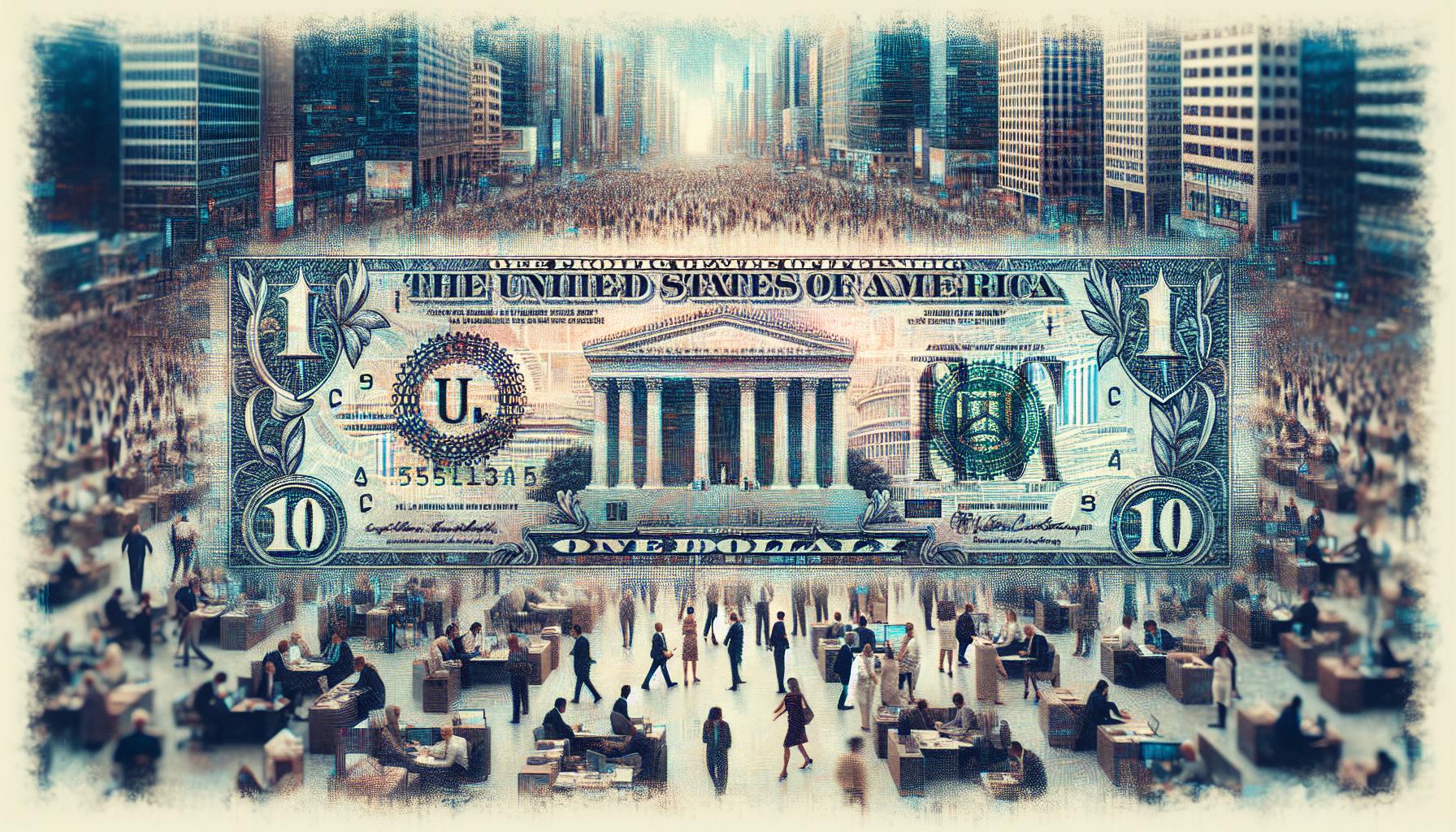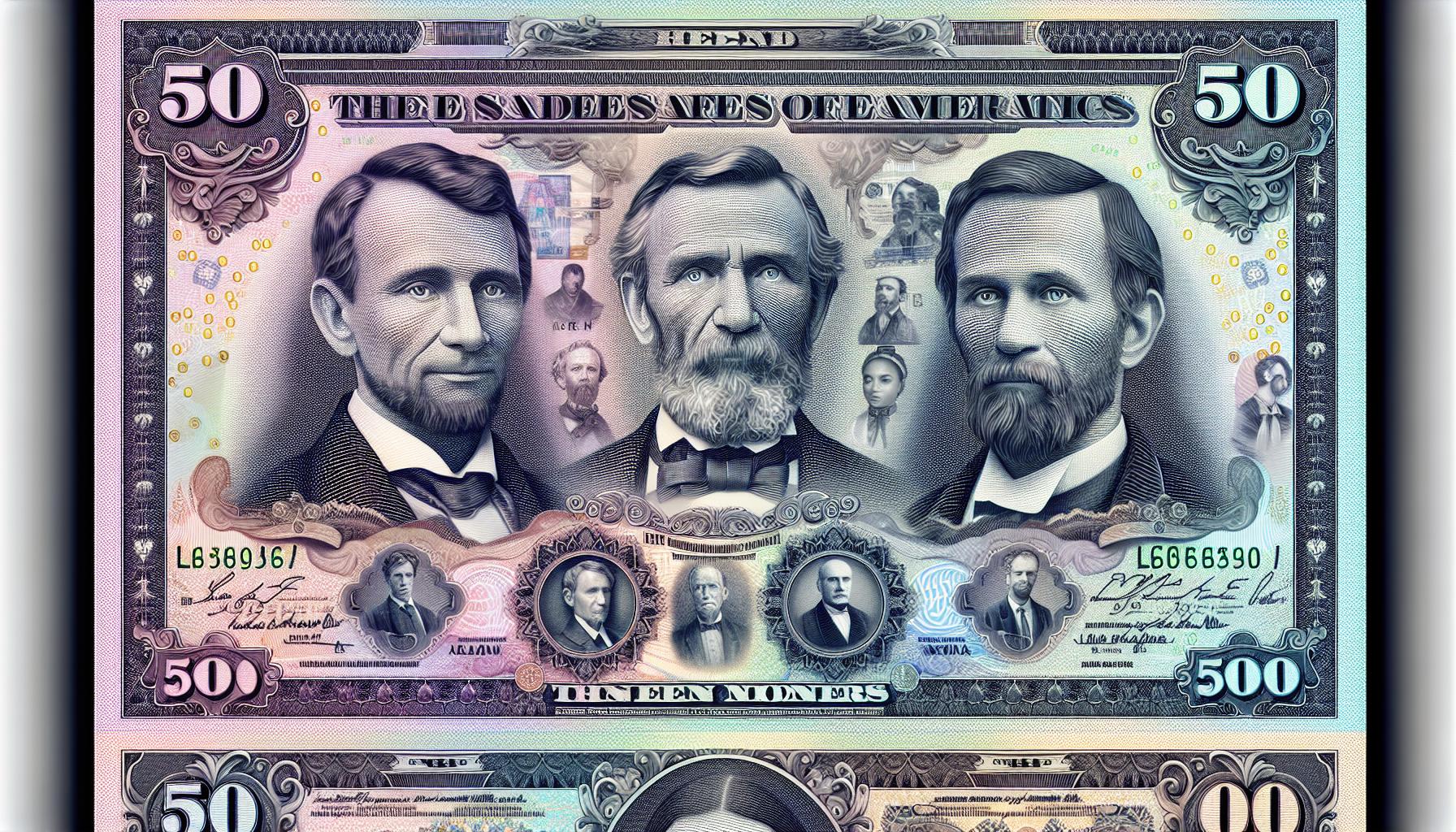
I’ve always been fascinated by the world of finance, and one term that’s caught my attention recently is dollar:wntg-efiiyk= money. This unique concept has been making waves in financial circles, prompting many to reconsider their understanding of currency and value.
At first glance, it might seem like a cryptic code, but it’s actually a revolutionary approach to thinking about money. As we dive deeper into this topic, we’ll explore how this concept is reshaping our perception of wealth and financial transactions. Whether you’re a seasoned investor or simply curious about the future of money, understanding dollar:wntg-efiiyk= money could give you a valuable edge in today’s rapidly evolving economic landscape.
Key Takeaways
- The U.S. dollar serves as the world’s primary reserve currency, influencing global trade and financial markets
- Dollar money exists in various forms, including physical currency, digital representations, and financial instruments
- The Federal Reserve System manages the dollar’s supply and implements monetary policies to maintain economic stability
- The dollar’s evolution from a precious metal-backed currency to a fiat system reflects changes in global economics
- Modern dollar bills incorporate sophisticated design elements and anti-counterfeiting technologies to ensure authenticity
- Digital transformation has revolutionized dollar transactions, with the rise of electronic payments and potential for digital currencies
Dollar:wntg-efiiyk= Money
Dollar money represents the foundation of the United States’ financial system and plays a crucial role in global economics. As the world’s primary reserve currency, the U.S. dollar holds significant influence over international trade and financial markets.
The dollar’s strength stems from several factors:
- Economic stability of the United States
- Large and liquid financial markets
- Federal Reserve’s monetary policies
- Global demand for dollar-denominated assets
Dollar money exists in various forms:
- Physical currency (banknotes and coins)
- Digital representations in bank accounts
- Electronic transfers and payments
- Treasury securities and other financial instruments
The Federal Reserve System, the central bank of the United States, manages the supply of dollar money. It implements monetary policies to maintain price stability and promote maximum employment.
Key functions of dollar money include:
- Medium of exchange for goods and services
- Store of value for savings and investments
- Unit of account for financial transactions
- Benchmark for global commodity prices
Understanding dollar money’s role in the global economy is essential for individuals, businesses, and policymakers. Its fluctuations can impact everything from personal finances to international trade agreements.
The History and Evolution of Dollar Currency

The dollar’s journey from its humble beginnings to its current status as a global currency is a fascinating tale of economic growth and innovation. Its evolution reflects the changing landscape of international trade and finance over the centuries.
Origins of the Dollar
The dollar’s story begins in 1518 when Count Hieronymus Schlick of Bohemia minted silver coins called “Joachimsthalers.” These coins, later shortened to “thalers,” became the basis for various currencies, including the Spanish dollar. In 1785, the Continental Congress adopted the dollar as the official currency of the United States, inspired by the widespread use of Spanish dollars in the American colonies.
- 1792: The Coinage Act establishes the U.S. Mint and defines the dollar as a unit of weight in gold or silver.
- 1862: The Legal Tender Act authorizes the issuance of paper currency (greenbacks) during the Civil War.
- 1913: The Federal Reserve Act creates the central banking system to manage the dollar’s supply and value.
- 1944: The Bretton Woods Agreement establishes the dollar as the world’s primary reserve currency.
- 1971: President Nixon ends the gold standard, transitioning the dollar to a fiat currency.
- 1999: The introduction of the euro challenges the dollar’s global dominance.
- 2008: The global financial crisis prompts unprecedented monetary policies, affecting the dollar’s role.
These milestones showcase the dollar’s transformation from a precious metal-backed currency to a fiat money system, adapting to changing economic conditions and maintaining its global significance.
The Role of Dollar Money in Global Economics

The U.S. dollar’s influence extends far beyond America’s borders, shaping the global economic landscape. Its status as the world’s primary reserve currency and its impact on international trade underscore its significance in the global financial system.
Dollar as a Reserve Currency
The dollar’s position as the dominant reserve currency stems from its stability and widespread acceptance. Central banks worldwide hold significant dollar reserves to stabilize their own currencies and facilitate international transactions. This status allows the U.S. to borrow at lower interest rates and exert considerable influence over global financial markets. The dollar’s reserve currency status also contributes to its liquidity, making it easier for countries to conduct trade and manage their foreign exchange reserves.
Impact on International Trade
The dollar’s role in international trade is pivotal, serving as the primary currency for global transactions. Many commodities, including oil, are priced in dollars, creating a consistent demand for the currency. This “dollarization” of trade simplifies cross-border transactions and reduces exchange rate risks for businesses operating internationally. However, it also exposes non-U.S. economies to fluctuations in the dollar’s value, potentially impacting their trade balances and economic stability. The dollar’s strength can affect the competitiveness of U.S. exports and influence global trade patterns, highlighting its far-reaching impact on the world economy.
Features and Security Measures of Dollar Bills

Dollar bills incorporate sophisticated design elements and security features to maintain their integrity and prevent counterfeiting. These measures ensure the authenticity of U.S. currency and protect its value in global financial transactions.
Design Elements of Modern Dollar Notes
Modern dollar notes feature intricate designs that serve both aesthetic and security purposes. The front of each bill displays a portrait of a prominent historical figure, such as George Washington on the $1 bill or Abraham Lincoln on the $5 bill. Detailed engravings and fine line printing create complex patterns that are difficult to replicate. Color-shifting ink, used on denominations of $10 and higher, changes hue when viewed from different angles. Watermarks, visible when held up to light, provide an additional layer of authenticity. Serial numbers, printed twice on each note, help track and identify individual bills. The Federal Reserve seal and Treasury Department seal further authenticate the currency’s official status.
Anti-Counterfeiting Technologies
U.S. dollar bills employ cutting-edge anti-counterfeiting technologies to thwart forgery attempts. Security threads, embedded within the paper and visible under ultraviolet light, display the denomination of the bill. Microprinting, visible only under magnification, appears on various parts of the note. Raised printing, achieved through intaglio printing processes, gives the bills a distinctive texture. For higher denominations, like the $100 bill, a 3D security ribbon contains images that move when the note is tilted. Optically variable ink, which appears to change color when viewed from different angles, is used on the numeral in the lower right corner of bills $10 and above. These advanced features, combined with ongoing research and development, make U.S. currency one of the most secure in the world.
Digital Transformation of Dollar Money
The digital transformation of dollar money has revolutionized financial transactions and wealth management. This shift has ushered in new forms of currency and payment methods, significantly impacting the global economy.
Electronic Dollar Transactions
Electronic dollar transactions have become the backbone of modern finance. Online banking, digital wallets, and mobile payment apps have made transferring and managing dollar funds easier and more efficient. These platforms enable instant transactions, reducing the need for physical cash and streamlining financial operations for individuals and businesses alike. The rise of contactless payments and near-field communication (NFC) technology has further accelerated the adoption of electronic dollar transactions, offering convenience and enhanced security.
Cryptocurrencies and the Future of Dollar Money
Cryptocurrencies present both challenges and opportunities for traditional dollar money. Bitcoin, Ethereum, and other digital currencies offer decentralized alternatives to fiat currencies, potentially disrupting the dollar’s dominance in global finance. Central Bank Digital Currencies (CBDCs), including a potential digital dollar, are being explored by the Federal Reserve to maintain the dollar’s relevance in the digital age. These developments could reshape international trade, monetary policy, and financial inclusion, potentially altering the landscape of global economics and the role of dollar money in the future.
Economic Policies Affecting Dollar Value
Economic policies significantly influence the value of dollar money in both domestic and international markets. These policies, implemented by various government entities, shape the economic landscape and directly impact the dollar’s strength and purchasing power.
Federal Reserve’s Influence on Dollar Money
The Federal Reserve plays a pivotal role in shaping the value of dollar money through its monetary policies. By adjusting interest rates, the Fed influences borrowing costs, investment decisions, and overall economic activity. Quantitative easing programs, where the Fed purchases large amounts of securities, inject liquidity into the market and can affect the dollar’s value. The Fed’s forward guidance on future policy decisions also impacts market expectations and currency valuations.
Inflation and the Purchasing Power of the Dollar
Inflation erodes the purchasing power of dollar money over time. The Consumer Price Index (CPI) measures changes in the price level of a basket of consumer goods and services. When inflation rises, each dollar buys fewer goods and services, effectively reducing its value. The Federal Reserve targets a 2% annual inflation rate to maintain price stability. Periods of high inflation, such as the 1970s when inflation peaked at 14.8%, significantly devalue the dollar, while low inflation or deflation can increase its purchasing power.
Currency and Value
The concept of dollar:wntg-efiiyk= money represents a fascinating shift in our understanding of currency and value. As we’ve explored the dollar’s history evolution and global influence it’s clear that its role continues to evolve. From physical notes to digital transactions the dollar remains a cornerstone of the world economy. However emerging technologies and changing economic landscapes present both challenges and opportunities. The future of money is undoubtedly exciting and I’ll be watching closely as new developments unfold. Understanding these trends is crucial for anyone looking to navigate the complex world of finance in the years to come.







